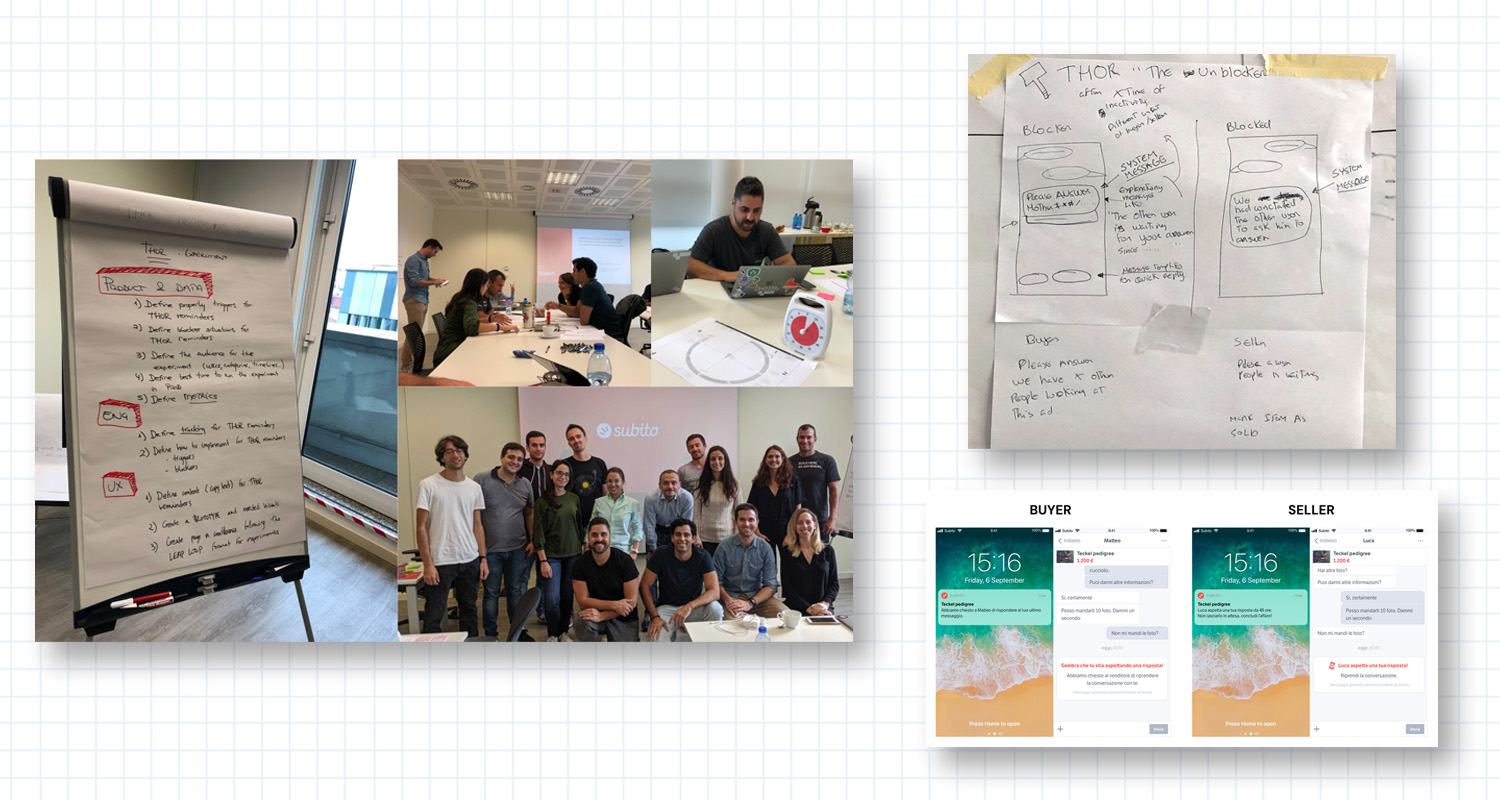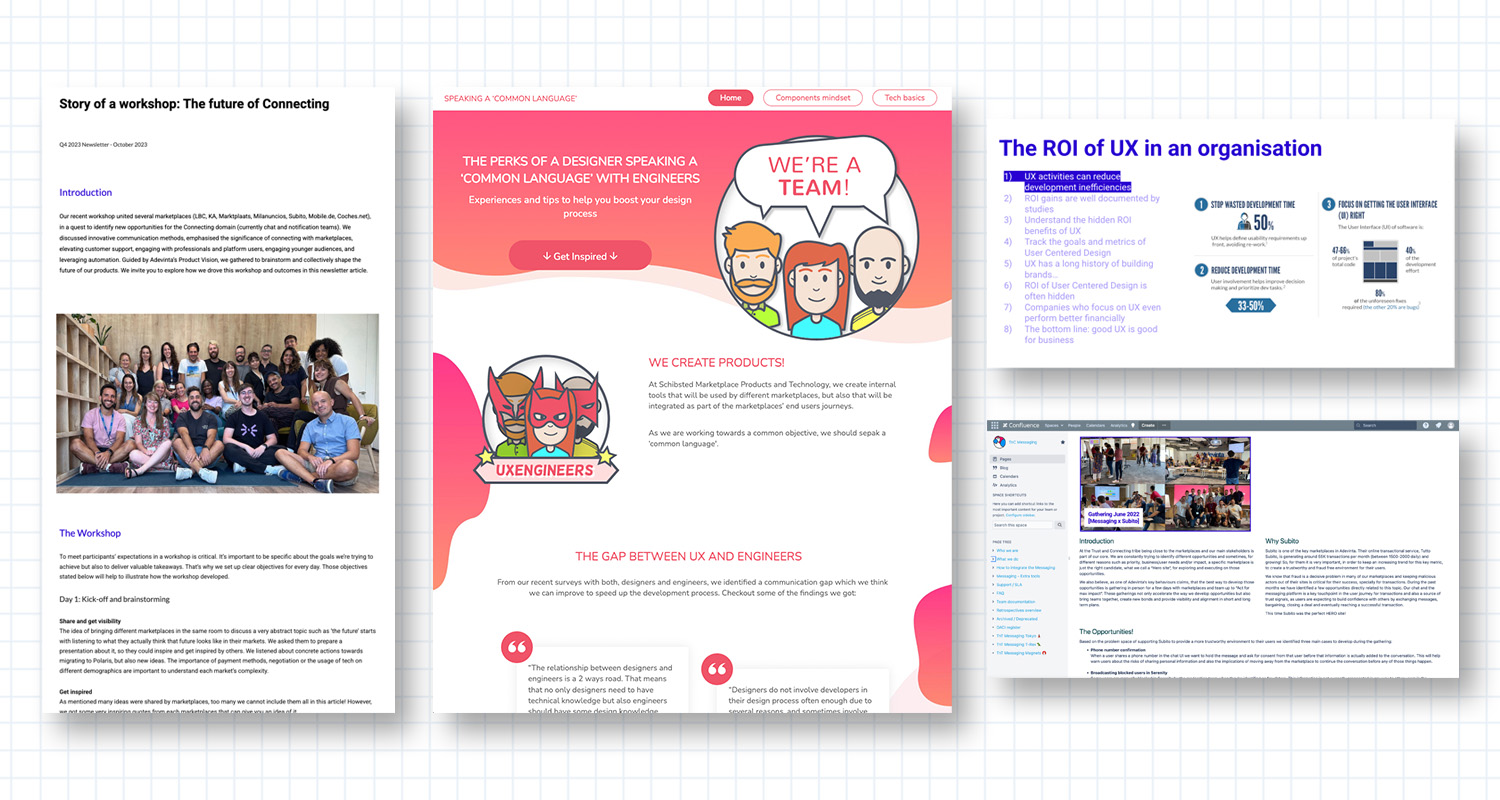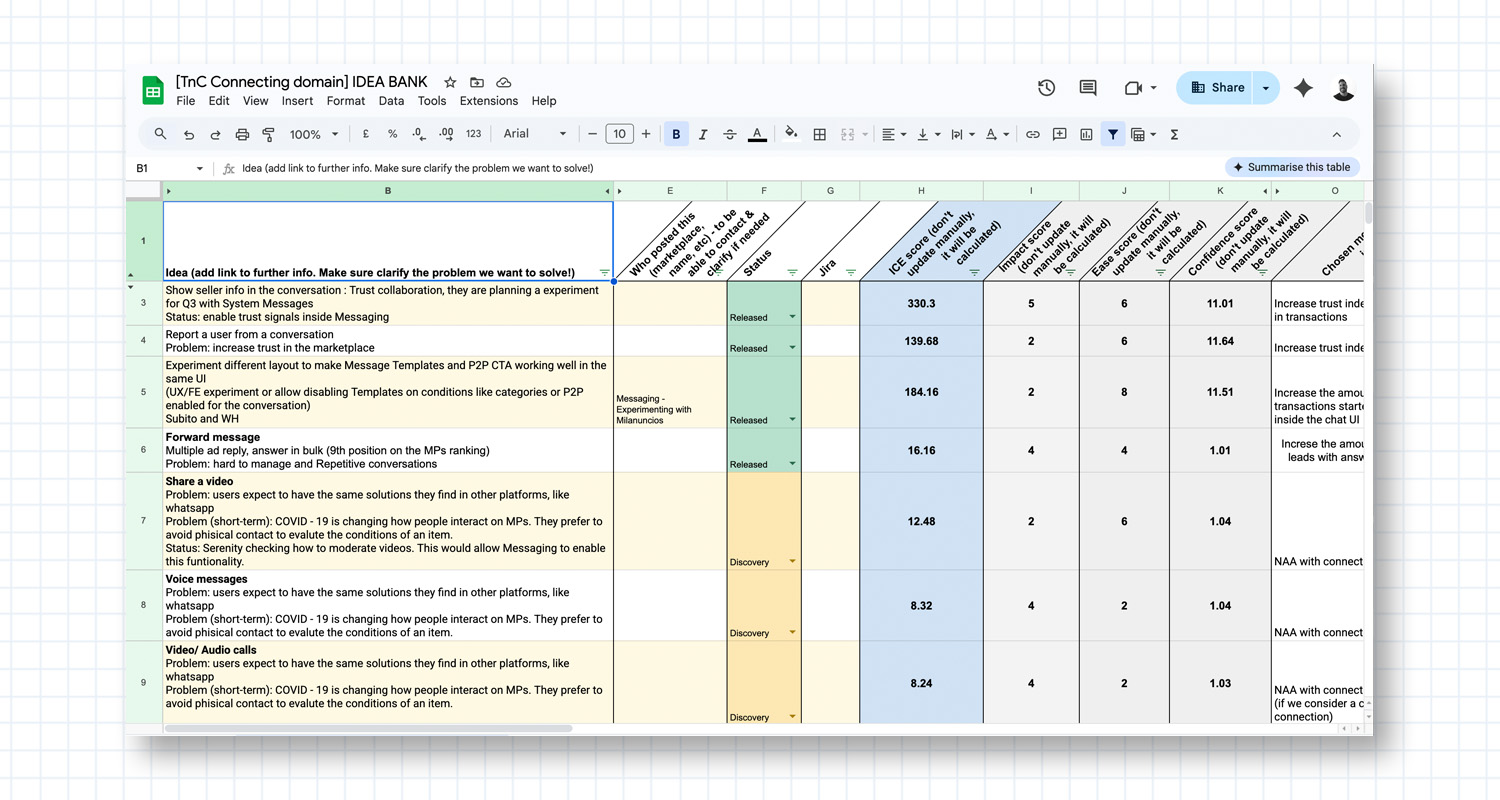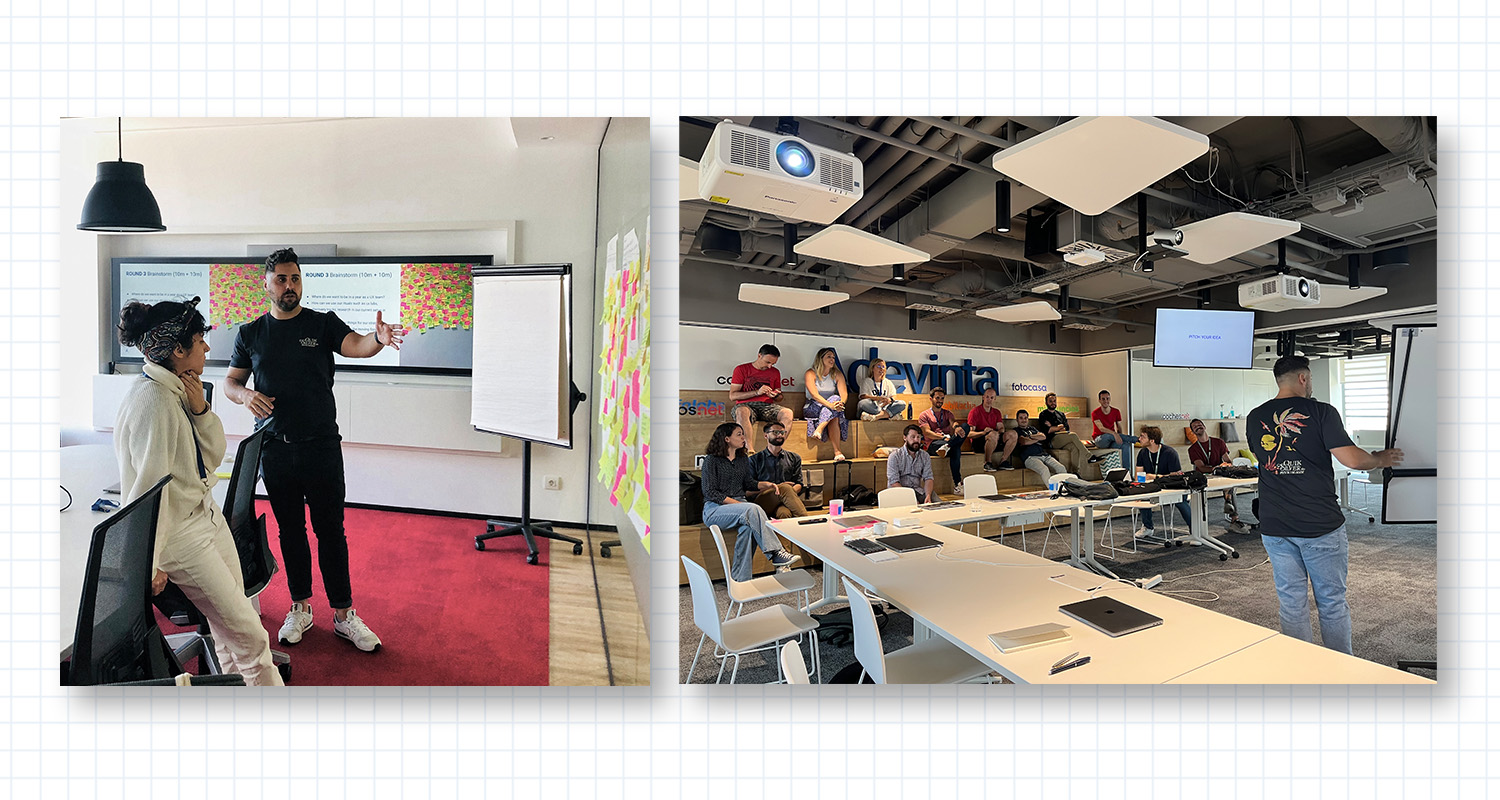Ideation workshops, collaborative brainstorms
🤖 This summary has been created with AI
Ideation is my favourite part of the process—it’s where insights turn into real solutions. I love bringing teams together to co-create, and one of my favourite examples is a feature we built to reduce ghosting in chat.
- Ran cross-functional workshops to tackle ghosting with data-driven ideas
- Co-created “Thor,” a feature that nudged users to close unfinished chats
- Successfully tested and launched it, with other markets adopting the solution
Ideation is my favourite stage of the design process. Once I’ve gathered sufficient insights into the problem space, I organise cross-functional workshops to begin exploring potential solutions. To find out more about my experience with workshops you can visit the next use case, UX research
Thor: From Idea to Feature. In collaboration with my Italian colleagues, we wanted to tackle one of the most significant user challenges in their marketplace: ghosting in the chat. Buyers were frustrated when their messages to sellers did not receive a reply. On the other hand, sellers found it overwhelming to manage multiple conversations about a single item, particularly without the tools to filter out less relevant conversations, often leading them to ignore messages altogether.
After a couple of days of collaborative brainstorming, guided by both quantitative and qualitative data, we developed a solution code-named Thor. The concept was to identify conversations lacking closure and notify both buyers and sellers, prompting them to respond to these ‘unfinished’ chats. We designed the experiment (Proof of concept if you like), defined success metrics, mapped user flows, and aligned on implementation. The experiment proved successful, and we quickly productised Thor as part of our chat solution. Following this success, other marketplaces began adopting the feature, tailoring it to their own specific use cases.





